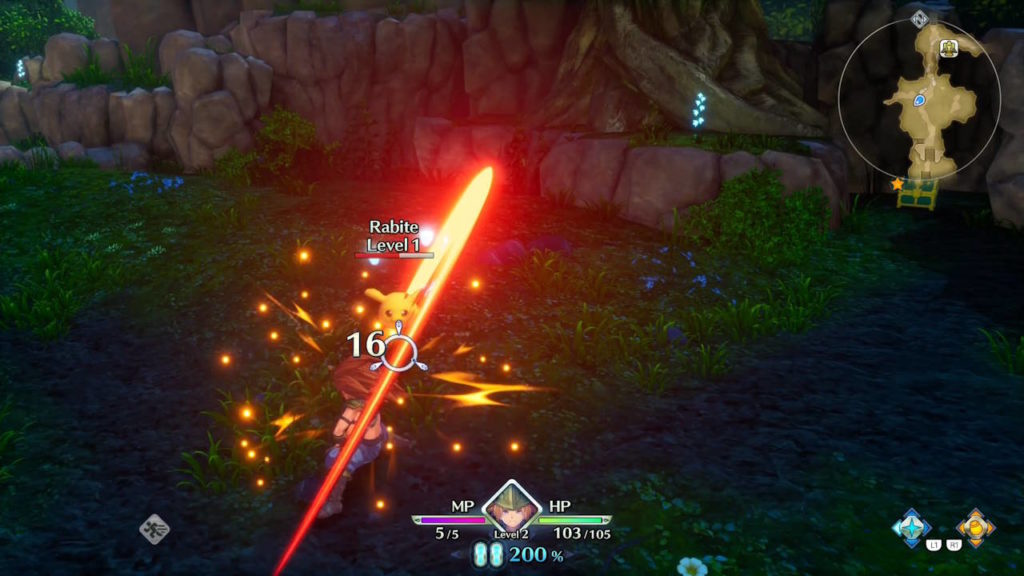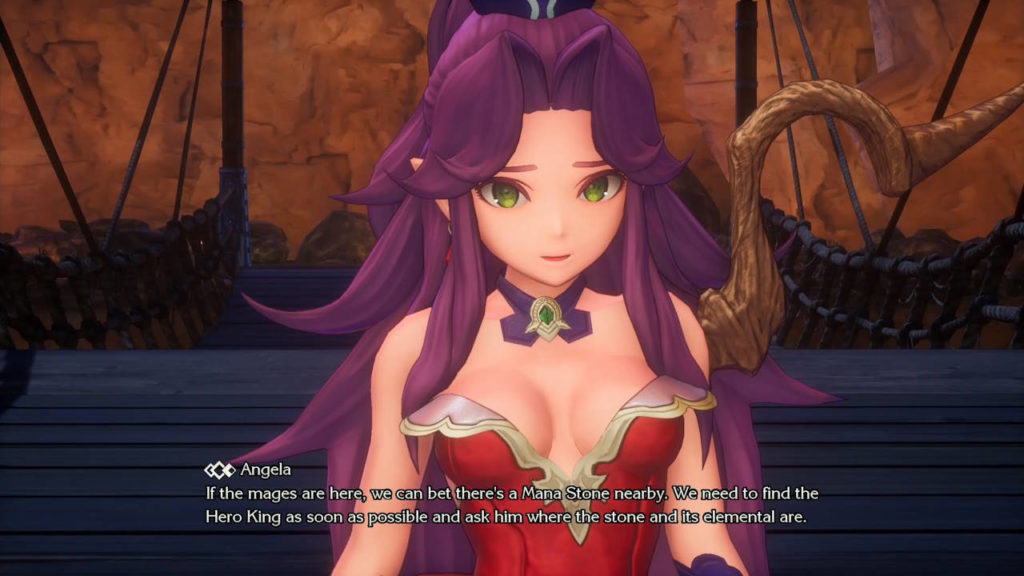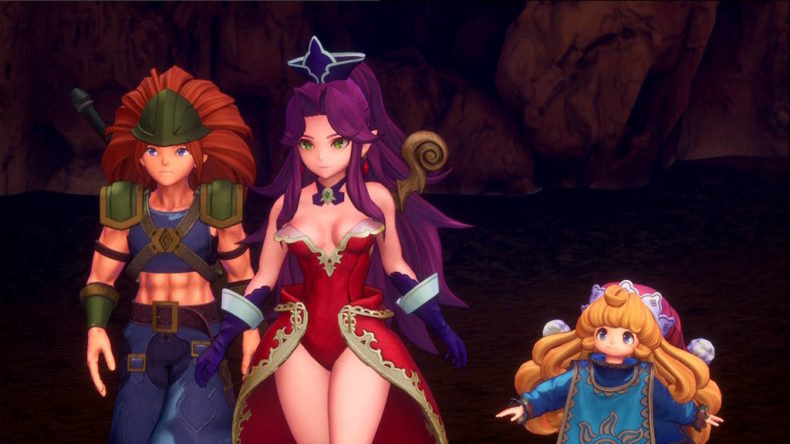24 April 2020
The Trials of Mana remake certainly has a tough time of it. It launches just weeks after the juggernaut that was the remake of Final Fantasy VII. It’s Square Enix’s second remake launch in a single month, and Trials of Mana certainly hasn’t had the fanfare or attention afforded to Cloud Strife’s epic adventure. And that’s a shame because it deserves more than to play second fiddle to more recognisable titles. This is not only a game with plenty of promise but a worthy remake to boot.
Many of you won’t be familiar with Trials of Mana at all. Released in Japan as Seiken Densetsu 3, it only made its way to a global audience thanks to the Collection of Mana compilation that came to Nintendo Switch last year. And that’s important because it puts more pressure on this new version of Trials of Mana to not only appeal to fans of the original, but also stay relevant and interesting to a brand new audience. As a result, we’re treated to a remake that feels like an intentional mix of old and new to try to hit that elusive sweet spot.
What was always going to remain true was the story, but for Trials of Mana that’s a significant point. The original game set its stall out a little differently than most, with a choice of six characters to choose a party of three from. You choose a central character and two companions, and the story is taken from the perspective of those you choose. The main beats are unquestionably the same, but depending on your choices, you’ll understand different character motivations, visit some different locations and even face off against different main antagonists. All six characters will appear throughout the plot, but you’ll only get involved in the brief exchanges of the three characters you didn’t pick when their stories overlap with your main party. As such there’s a decent reason to jump back in for a second playthrough with a new party to see more of the content.

The change comes in the jump from the original top-down 2D environments to now a fully-realised 3D world. This is instantly more engaging as the locales feel more alive, and are well adapted from their 2D source material. Sensible decisions have been taken to make them feel like natural 3D environments, rather than looking odd for the sake of sticking strictly to their 1995 2D designs. The move to 3D means the camera is now controlled by the player, to get the angles you need. This is done relatively intuitively and simply with the right stick. It controls well for the most part, and you can swing the perspective with a good degree of precision. The one frustration is the frequency with which the camera needs rotating. Often to either see things from a decent angle or to not have your vision completely impaired by a low-hanging tree or other obstacle, you’ll need to swing it around. And in the middle of combat, that can be another thing to juggle rather than focus on smashing the enemy.
Perhaps the biggest overhaul is to the combat itself. Battles are still in real-time against enemies visible in the field like the original. When you engage them, a circle surrounds you and you must defeat all enemies to progress, similar to the Okami titles. The process of fighting is much slicker than the original, with a quick and heavy attack assigned to different buttons. You can chain these together for a simple combo and even jump to attack flying enemies in the air. It creates very satisfying and fluid battles, especially if you use characters in your party who are more skilled at combat such as Duran. Some enemies have shields that need to be worn down before you damage them, and you can also land critical hits if you can get behind a foe. Significant enemy attacks are also telegraphed with a red AoE marker on the battlefield, so you can dodge roll out of the way of oncoming attacks. It means there’s always plenty going on to react to, and helps keep things fresh throughout the adventure.

Trials of Mana is a very customisable experience in terms of your party too. Aside from the traditional levelling up by gaining experience, there’s plenty of other areas you can tweak to make your characters stronger in certain areas. You gain Training Points which can be spent in different areas to not only improve your character’s stats, but also unlock spells and buffs to assist you. Reach certain levels and requirements and you can even change the class of all your party. With six classes accessible during the main story for each character, with different stats and abilities, there’s plenty to sink your teeth into and set to your personal preferences.
In terms of difficulty, Trials of Mana isn’t too much of a challenge, thanks to your options in combat and how much you can tweak your party to suit you. Also, being able to hold up to 99 of each item, including numerous healing and damage-dealing ones, means you’re never short of options. Most players won’t have too much trouble on the Normal difficulty, although there is a Hard mode available. Bosses, whilst certainly more challenging than your average enemy, still work in the same way of attacking and then dodging the red-marked areas to avoid damage. The one exception is that some bosses have a special attack which deals extraordinary damage. To prevent it, you must destroy an object before the attack powers up. Succeed and the attack is cancelled, the boss is stunned and you can wail on them for a while. Fail, and you’ll take one heck of a hit, which can annihilate your entire party in one go. It feels a little cheap, especially because the AI isn’t great at helping you attack the object quickly, leaving it up to you and your reactions to prevent instant death. It felt a bit jarring given the lack of real challenge elsewhere.
The music is a faithful reimagining of the original score, and those who are familiar with the original, or the Mana series in general, will likely acknowledge certain melodies or noises. The voice acting though is a little less on point. It’s delivered with far too much gusto in most cases, and even simple conversations can feel far too exaggerated as a result. It is a small thing, but it is noticeable given how much of the dialogue is fully-voiced in the remake. The Charlotte character, in particular, is very irritating to listen to, and I would encourage you to avoid having her in your party unless you’re really keen to hear a lot of “sowwy” and other childish vernacular. You have been warned.
Visually it’s a nice game to look at, opting for a safer, cartoony feel to things. Pushing the envelope they most certainly aren’t but they’re competent and are in keeping with the tone and setting of the game itself. There is noticeable texture pop-in at times, which is incredibly noticeable during cutscenes on occasion. It momentarily takes your focus away from the scene, but before long your focus is back on the action and dialogue in front of you.
Trials of Mana is an enjoyable adventure with plenty of depth and customisation. There’s a lot of content to see, and not just during the 20 hours the main story will take you. There’s also a draw for multiple playthroughs and tweaking preferences with training and class setups. The combat is a high-point as you always feel in control, even if this does mean the game becomes quite easy once you get into a rhythm. And a few niggles aside, it sounds and looks lovely. It’s a solid example of how a remake can be faithful to its original content while updating the gameplay for a new audience.
Faithful to its source material
Fluid, fun combat
Plenty of content
Lots to tweak and customise in your party
A little easy
Some questionable voice acting
Occasional texture pop-in
Trials of Mana is a faithful remake of a game many won't have played. The care and attention it's been given belies its simple visuals, resulting in a lovely RPG experience.





